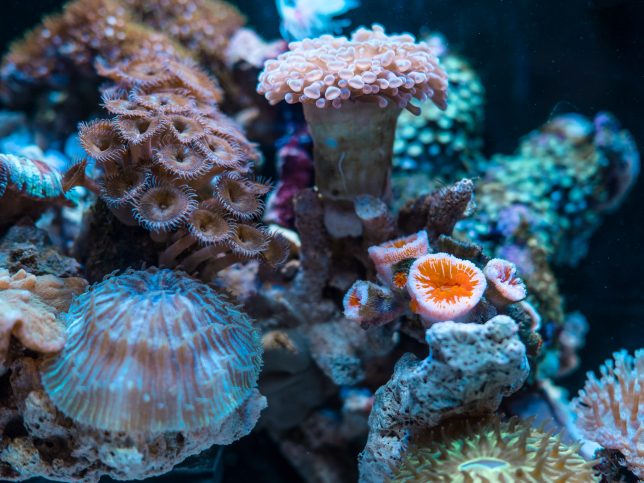
“This is a historic day for conservation and a sign that in a divided world, protecting nature and people can triumph over geopolitics,” said Greenpeace in response to an agreement to protect world’s marine biodiversity.
Ocean conservationists expressed elation late Saturday after it was announced—following nearly two decades of consideration and effort—that delegates from around the world had agreed to language for a far-reaching global treaty aimed at protecting the biodiversity on the high seas and in the deep oceans of the world.
“This is a historic day for conservation and a sign that in a divided world, protecting nature and people can triumph over geopolitics,” declared Dr. Laura Meller, the oceans campaigner for Greenpeace Nordic.
“We praise countries for seeking compromises, putting aside differences, and delivering a Treaty that will let us protect the oceans, build our resilience to climate change and safeguard the lives and livelihoods of billions of people,” Meller added.
The final text of the Global Ocean Treaty, formally referred to as the Biodiversity Beyond National Jurisdiction treaty (BBNJ), was reached after a two-week round of talks that concluded with a 48-hour marathon push between delegations at the United Nations headquarters in New York.
“This is huge,” said Greenpeace in a social media post, calling the agreement “the biggest conservation victory ever!”
Rena Lee of Singapore, the U.N Ambassador for Oceans and president of the conference hosting the talks, received a standing ovation after announcing a final deal had been reached. “The shipped has reached the shore,” Lee told the conference.
BBNJ President Rena Lee: "The ship has reached the shore."
— Duncan Currie (@Duncan_Currie) March 5, 2023
The BBNJ Agreement is agreed. pic.twitter.com/28oIVpFaOt
“Following a two-week-long rollercoaster ride of negotiations and super-hero efforts in the last 48 hours, governments reached agreement on key issues that will advance protection and better management of marine biodiversity in the High Seas,” said Rebecca Hubbard, director of the High Seas Alliance, a coalition of over 40 ocean-focused NGOs that also includes the International Union for the Conservation of Nature (IUCN).
Minna Epps, director of the Global Marine and Polar Programme at the IUCN, said the agreement represents a new opportunity.
“The High Seas Treaty opens the path for humankind to finally provide protection to marine life across our one ocean,” Epps said in a statement. “Its adoption closes essential gaps in international law and offers a framework for governments to work together to protect global ocean health, climate resilience, and the socioeconomic wellbeing and food security of billions of people.”
Protecting the world’s high seas, which refers to areas of the oceans outside the jurisdiction of any country, is part of the larger push to protect planetary biodiversity and seen as key if nations want to keep their commitment to the UN-brokered Kunming-Montreal Global Biodiversity Framework—also known as the known as the 30×30 pledge—that aims protect 30 percent of the world’s natural habitat by 2030.
“With currently just over 1% of the High Seas protected,” said the High Seas Alliance in a statement, “the new Treaty will provide a pathway to establish marine protected areas in these waters.” The group said the treaty will make acheiving the goals of the Kunming-Montreal agreement possible, but that “time is of the essence” for the world’s biodiversity.
“The new Treaty will bring ocean governance into the 21st century,” said the group, “including establishing modern requirements to assess and manage planned human activities that would affect marine life in the High Seas as well as ensuring greater transparency. This will greatly strengthen the effective area-based management of fishing, shipping, and other activities that have contributed to the overall decline in ocean health.”
According to Greenpeace’s assessment of the talks:
The High Ambition Coalition, which includes the EU, US and UK, and China were key players in brokering the deal. Both showed willingness to compromise in the final days of talks, and built coalitions instead of sowing division. Small Island States have shown leadership throughout the process, and the G77 group led the way in ensuring the Treaty can be put into practice in a fair and equitable way.
The fair sharing of monetary benefits from Marine Genetic Resources was a key sticking point. This was only resolved on the final day of talks. The section of the Treaty on Marine Protected Areas does away with broken consensus-based decision making which has failed to protect the oceans through existing regional bodies like the Antarctic Ocean Commission. While there are still major issues in the text, it is a workable Treaty that is a starting point for protecting 30% of the world’s oceans.
The group said it is now urgent for governments around the world to take the final step of ratifying the treaty.
“We can now finally move from talk to real change at sea. Countries must formally adopt the Treaty and ratify it as quickly as possible to bring it into force, and then deliver the fully protected ocean sanctuaries our planet needs,” Meller said. “The clock is still ticking to deliver 30×30. We have half a decade left, and we can’t be complacent.”
